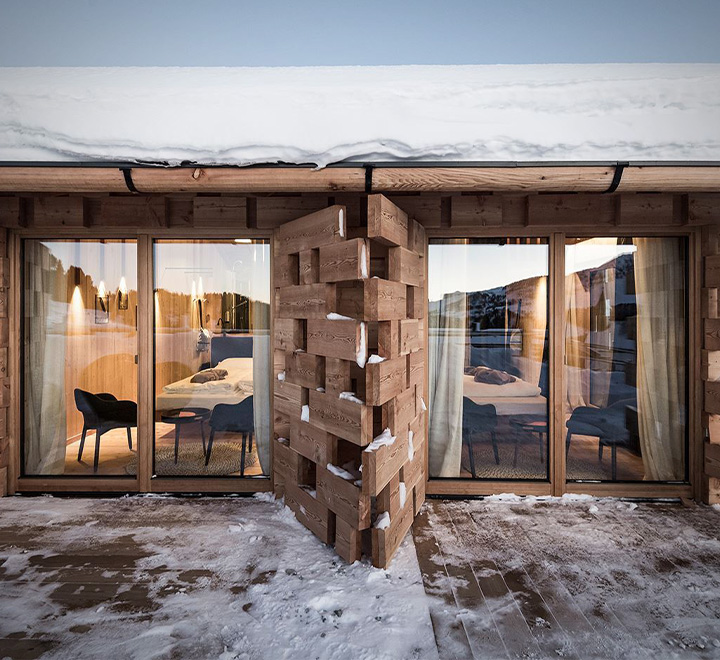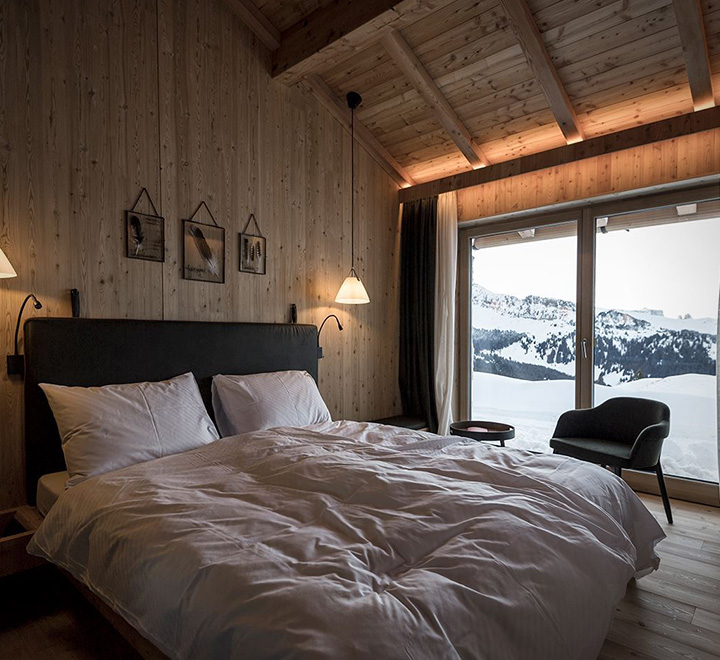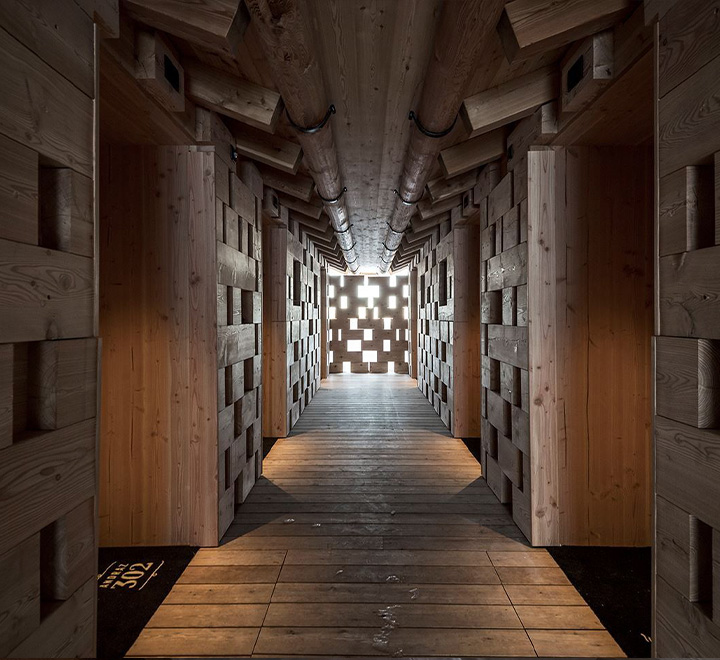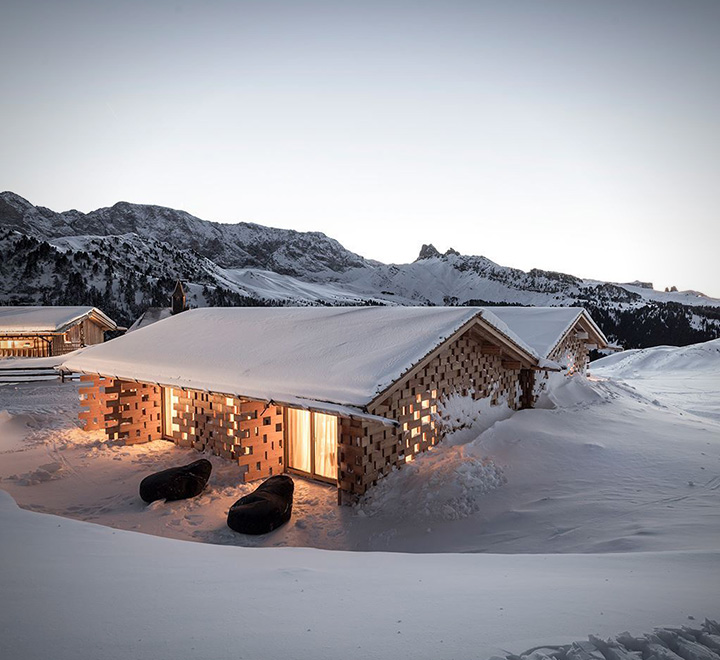Dreaming of a winter escape, maybe to an idyllic Italian alpine village where you can hide out sipping grappa and spending your days on cross-country treks across the Dolomites? Look no further than Zallinger, a recently restored and expanded high-mountain “hut” and chalet property in an unbeatable location.
EXPLORING THE SPACE

Welcome to the Alpe di Suisi, a South Tyrol vacation destination best known for exceptional hiking, mountain biking, cross-country, and downhill winter sports. Your accommodation of choice in this perennial playground is Zallinger, a 160-year-old hotel compound offering vacation packages for all seasons and activity levels—special weekly ski rates, stargazing tours, and herbal education classes to name a few. Marketing ploys aside, Zallinger comes by its most powerful charms naturally, in the geography of the region itself. Lush alpine meadows roll out beneath the singular Dolomite range, forming a mountain plateau paradise surrounded by some of the world’s most stunning snow-capped peaks.
The hotel is an expansion of the historic Zallinger Refuge, which dates back to the 1860s. The team at noa* (a network of architecture) have reimagined the South Tyrolean retreat for modern times, and have created new spaces without expanding the volume of existing structures. It’s an impressive feat, achieved through ingenious planning and the highest level of environmentally conscious design. The historic village on the site once included seven small barns, a church, and the original Zallinger Hut, erected in 1880. The new arrangement revives the primary hotel structure with updated interior layouts and features seven chalets arranged with respect to the historic footprint of the barns.
As a designated ClimaHotel, Zallinger boasts no cars or light pollution on-site: guests leave their vehicles down in the valley and are brought up to the settlement by bus or snow-cat, depending on the season. What the hotel may lack in accessibility it more than makes up for in sustainability (read: pellet heating) and remote beauty—isn’t that why you come all the way to the top of Europe, anyhow? To see more friendly chestnut-and-cream Haflinger horses than cars, and to spend some time with like-minded adventurers in the spare comfort of a mountain refuge?
Accommodations range from 12 traditional rooms in the main building to new chalets and alpine rooms. Most spaces feature floor-to-ceiling Swiss pine and spruce paneling, giving the impression of a spacious sauna, with counters, custom storage, and nightstands all built-in from the same material. Inspired by the structure of the original barns, the chalets have external claddings made of interlocking blocks of wood that partially conceal large windows—when open they allow for uninterrupted views of the surrounding landscape, and when closed, they prohibit harsh high-altitude sun glare and contribute to that same “warm and safe in a beautiful wooden box” feeling.
Speaking of saunas, though Zallinger is not explicitly a wellness hotel, they do offer spa amenities. Unwind after a day in the mountains with a good sweat in the Turkish steam bath, or one of two saunas: a traditional Finnish or a newly completed one featuring panoramic views. Dining on-site is available for all meals, and we can’t think of a better way to start the day than an espresso out on the terrace, taking in the crisp mountain air and planning the next adventure.
Ultimately, Zallinger stands as a timely example of responsible tourism and the ecological imperative to not expand our human footprint in precious natural spaces beyond what is sustainable in the long term. With their dedication to minimally-invasive construction, traditional or pre-fabricated materials, and green energy solutions, noa* has revitalized the allure of an ancient South Tyrolean village with much to offer, preserving the beauty of the Alpe di Suisi for future generations.




Photo: Alex Filz
EDITOR'S TIPS
Zallinger’s elevation is 2,054 meters—comparable to Durango, CO and Big Sky, MT—so if you’re prone to altitude sickness, plan accordingly
Communal dinners are three courses and served promptly at 7 PM nightly. Toasting to new friends at the end of the meal is encouraged
Bring your gear, hiking and mountain biking trials are right outside your door and range from easy-to-difficult


